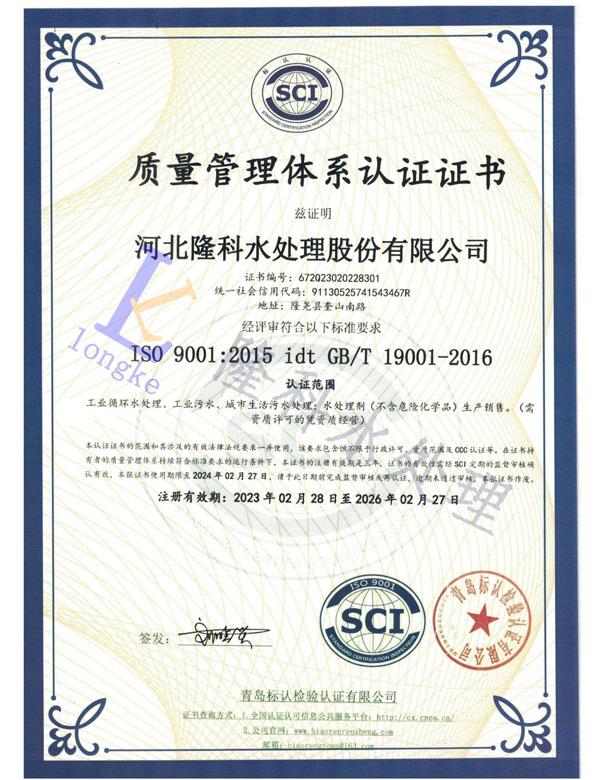polyacrylamide uses
The Versatile Applications of Polyacrylamide
Polyacrylamide is a synthetic polymer widely recognized for its versatility and efficacy in various fields, ranging from industrial applications to environmental management. This compound, which can be produced in both a non-ionic and anionic form, has become a staple in numerous industries due to its favorable properties such as high molecular weight, water solubility, and the ability to form gels. This article explores the diverse uses of polyacrylamide and its significance in modern applications.
1. Water Treatment
One of the most significant applications of polyacrylamide is in the water treatment industry. It is employed as a flocculant to facilitate the aggregation of suspended particles in wastewater. By improving the sedimentation process, polyacrylamide effectively helps remove impurities and clarifies water. This process is crucial for municipal wastewater treatment plants as well as for industrial effluent treatment, ensuring compliance with environmental regulations and protecting aquatic ecosystems.
2. Enhanced Oil Recovery
In the oil industry, polyacrylamide is utilized in enhanced oil recovery (EOR) techniques. It is injected into oil reservoirs to increase the viscosity of the water injected, thereby improving the displacement of oil. The use of polyacrylamide in EOR can significantly boost oil production rates, making it a valuable tool for maximizing output in mature oil fields.
3. Agriculture and Soil Management
Polyacrylamide has found a place in agricultural practices, especially in soil management and erosion control. It is used as a soil conditioner due to its ability to retain water and improve soil structure. By enhancing the soil's water-holding capacity, polyacrylamide helps in moisture retention, which is especially beneficial during droughts. Moreover, it reduces soil erosion by binding soil particles together, thus promoting sustainable farming practices.
polyacrylamide uses

4
. Biomedical ApplicationsThe biomedical field has also embraced polyacrylamide, particularly in the development of hydrogels used for drug delivery, wound healing, and tissue engineering. Because polyacrylamide can be engineered to form hydrogels with tailored physical and chemical properties, it is ideal for applications that require moisture retention and biocompatibility. These hydrogels are conducive to cellular growth, aiding in the regeneration of tissues.
5. Personal Care Products
Polyacrylamide is often found in personal care and cosmetic products as a thickening agent. It helps to stabilize emulsions, prevent oil and water separation, and improve texture. Its ability to create a smooth, luxurious feel makes it a popular ingredient in lotions, creams, and hair products. The safety and efficacy of polyacrylamide in such applications have contributed to its widespread use in the beauty industry.
6. Academic and Laboratory Research
In research settings, polyacrylamide gels are vital for electrophoresis, a method used to separate biological macromolecules such as proteins and nucleic acids. The ability to customize gel concentration allows researchers to optimize the separation process based on the size and nature of the molecules being analyzed. This application is pivotal in molecular biology, biochemistry, and genetic research, facilitating advancements in these fields.
Conclusion
The diverse uses of polyacrylamide showcase its essential role in various industries. From water treatment and oil recovery to agriculture and biomedicine, its ability to improve efficiency and effectiveness cannot be overstated. As research continues to advance, the potential applications for polyacrylamide are likely to expand, underscoring the importance of this polymer in addressing contemporary challenges. Its versatility makes polyacrylamide a critical substance in promoting sustainability, efficiency, and innovation in a wide range of sectors.
-
Understanding Polycarboxylic Acids: Properties, Applications, and Future PotentialNewsJul.28,2025
-
Scale Inhibitor Explained: How to Protect Your System from Limescale and Hard Water DamageNewsJul.28,2025
-
Scale and Corrosion Inhibitors: Essential Chemicals for Industrial Water System ProtectionNewsJul.28,2025
-
Polyaspartic Acid: A Biodegradable Polymer for Sustainable ChemistryNewsJul.28,2025
-
Isothiazolinones: A Versatile Antimicrobial Class with Industrial Power and Regulatory ChallengesNewsJul.28,2025
-
A Deep Dive into 2-Phosphonobutane-1,2,4-Tricarboxylic Acid (PBTC)NewsJul.28,2025





